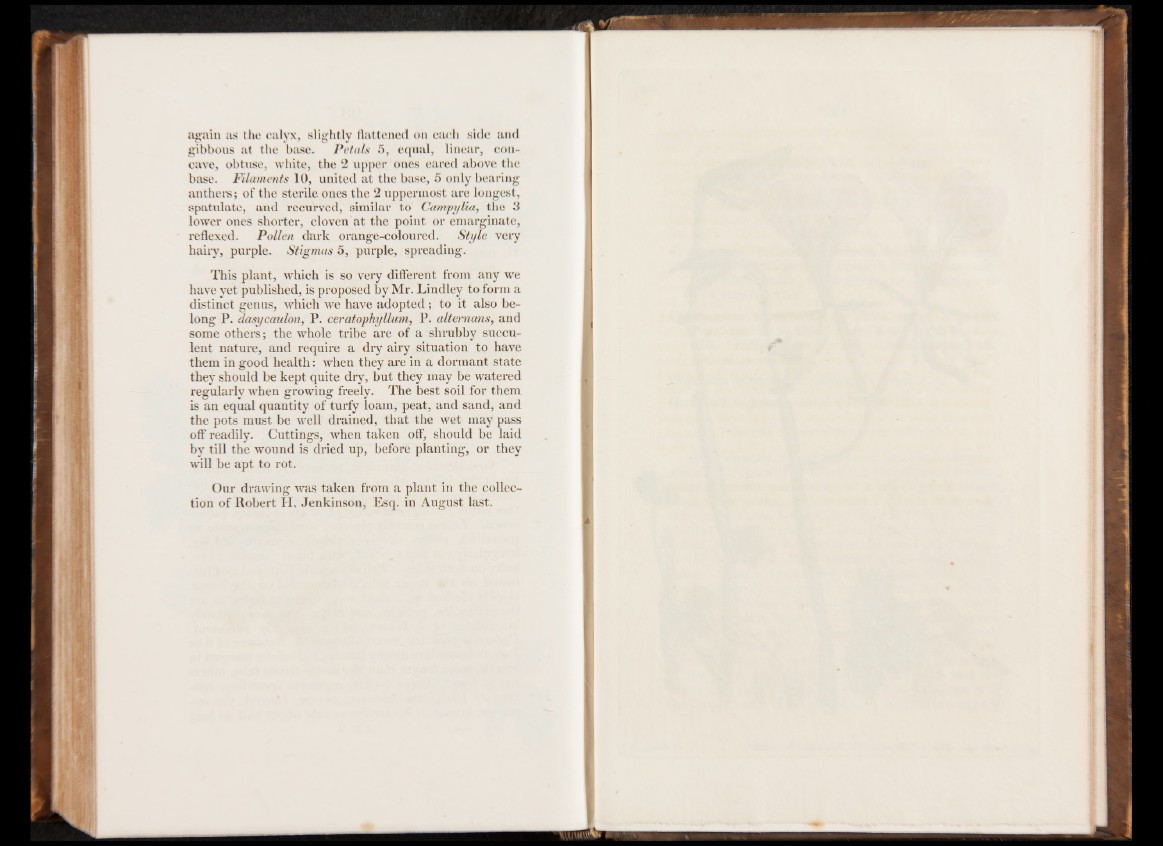
again as the calyx, slightly flattened on each side and
gibbous at the base. Petals 5, equal, linear, concave,
obtuse, white, the 2 upper ones eared above the
base. Filaments 10, united at the base, 5 only bearing
anthers; of the sterile ones the 2 uppermost are longest,
spatulate, and recurved, similar to lower ones shorter, cloven at the poinCt aomr peymliaar, gtihneat e3,
reflexed. Pollen dark orange-coloured. Style very
hairy, purple. Stigmas 5, purple, spreading.
This plant, which is so very different from any we
have yet published, is proposed by Mr. Lindley to form a
ldoinstgin Pc.t dgaesnyucsa,u lwonh,i cPh. wceer haatovpeh ayldluomp,t ePd.; atolt eimt aanlsso, abned
sleonmt en oatthuerers, ; atnhde wrehqoulier et riab ed rayr ea iroyf asi tsuhartuiobnb yt os uhcacvue
tthheemy s ihno guoldo db eh keeapltth q: uwiteh ednr yth, ebyu at rteh einy am dayo rbmea wnta tsetraetde regularly when growing freely. The best soil for them
is an equal quantity of turfy loam, peat, and sand, and
the pots must be well drained, that the wet may pass
off readily. Cuttings, when taken off, should be laid
by till the wound is dried up, before planting, or they
will be apt to rot.
Our drawing was taken from a plant in the collection
of Robert H, Jenkinson, Esq. in August last.